
Louisa May Alcott was an American novelist, short story writer, and poet best known for writing the novel Little Women (1868) and its sequels Good Wives (1869), Little Men (1871) and Jo's Boys (1886). Raised in New England by her transcendentalist parents, Abigail May and Amos Bronson Alcott, she grew up among many well-known intellectuals of the day, including Margaret Fuller, Ralph Waldo Emerson, Nathaniel Hawthorne, Henry David Thoreau, and Henry Wadsworth Longfellow.

Little Women is a coming-of-age novel written by American novelist Louisa May Alcott, originally published in two volumes in 1868 and 1869. The story follows the lives of the four March sisters—Meg, Jo, Beth, and Amy—and details their passage from childhood to womanhood. Loosely based on the lives of the author and her three sisters, it is classified as an autobiographical or semi-autobiographical novel.
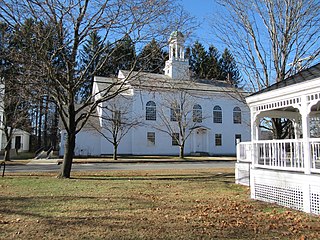
Walpole is a town in Cheshire County, New Hampshire, United States. The population was 3,633 at the 2020 census.
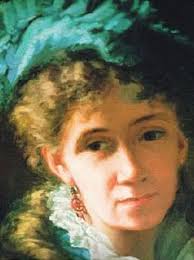
Abigail May Alcott Nieriker was an American artist and the youngest sister of Louisa May Alcott. She was the basis for the character Amy in her sister's semi-autobiographical novel Little Women (1868). She was named after her mother, Abigail May, and first called Abba, then Abby, and finally May, which she asked to be called in November 1863 when in her twenties.

Little Men, or Life at Plumfield with Jo's Boys, is a children's novel by American author Louisa May Alcott (1832–1888), which was first published in 1871 by Roberts Brothers. The book reprises characters from her 1868–69 two-volume novel Little Women, and acts as a sequel, or as the second book in an unofficial Little Women trilogy. The trilogy ends with Alcott's 1886 novel Jo's Boys, and How They Turned Out: A Sequel to "Little Men". Alcott's story recounts the life of Jo Bhaer, her husband, and the various children at Plumfield Estate School. Alcott's classic novel has been adapted to a 1934 film, a 1940 film, a 1998 film, a television series, and a Japanese animated television series.

Mary Louisa Molesworth, néeStewart was an English writer of children's stories who wrote for children under the name of Mrs Molesworth. Her first novels, for adult readers, Lover and Husband (1869) to Cicely (1874), appeared under the pseudonym of Ennis Graham. Her name occasionally appears in print as M. L. S. Molesworth.

St. Nicholas Magazine was a popular monthly American children's magazine, founded by Scribner's in 1873 and named after the Christian saint. The first editor was Mary Mapes Dodge, who continued her association with the magazine until her death in 1905. Dodge published work by the country's leading writers, including Louisa May Alcott, Frances Hodgson Burnett, Mark Twain, Laura E. Richards and Joel Chandler Harris. Many famous writers were first published in St. Nicholas League, a department that offered awards and cash prizes to the best work submitted by its juvenile readers. Edna St. Vincent Millay, F. Scott Fitzgerald, E. B. White, and Stephen Vincent Benét were all St. Nicholas League winners.

Mary Elizabeth Mapes Dodge was an American children's author and editor, best known for her novel Hans Brinker. She was the recognized leader in juvenile literature for almost a third of the nineteenth century.
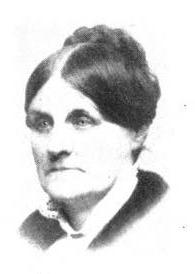
Abigail "Abba" Alcott was an American activist for several causes and one of the first paid social workers in the state of Massachusetts. She was the wife of transcendentalist Amos Bronson Alcott and mother of four daughters, including Civil War novelist Louisa May Alcott.

Jessie Willcox Smith was an American illustrator during the Golden Age of American illustration. She was considered "one of the greatest pure illustrators". A contributor to books and magazines during the late 19th and early 20th centuries, Smith illustrated stories and articles for clients such as Century, Collier's, Leslie's Weekly, Harper's, McClure's, Scribners, and the Ladies' Home Journal. She had an ongoing relationship with Good Housekeeping, which included a long-running Mother Goose series of illustrations and also the creation of all of the Good Housekeeping covers from December 1917 to 1933. Among the more than 60 books that Smith illustrated were Louisa May Alcott's Little Women and An Old-Fashioned Girl, Henry Wadsworth Longfellow's Evangeline, and Robert Louis Stevenson's A Child's Garden of Verses.

Eight Cousins, or The Aunt-Hill was published in 1875 by American novelist Louisa May Alcott. It was originally published as a serial in St. Nicholas. It is the story of Rose Campbell, who has been recently orphaned and resides with her maiden great aunts, the matriarchs of her wealthy family near Boston, until her guardian, Uncle Alec, returns from abroad to take over her care. Through his unorthodox theories about child-rearing, she becomes happier and healthier while finding her place in her family of seven boy cousins and numerous aunts and uncles. She also makes friends with Phebe, her aunts' young housemaid. Eight Cousins received both favorable and unfavorable reviews in the early days of its publication. Reviews focused on Alcott's stylistic tone as well as the portrayal of characters and realism. In Eight Cousins, Alcott discusses transcendental education, child-rearing, and social differences.

Jo's Boys, and How They Turned Out: A Sequel to "Little Men" is a novel by American author Louisa May Alcott, first published in 1886. The novel is the final book in the unofficial Little Women series. In it, the March sisters' children and the original students of Plumfield, now grown, are caught up in real world troubles as they work towards careers and pursue love.

A Long Fatal Love Chase is a 1866 novel by Louisa May Alcott published posthumously in 1995. Two years before the publication of Little Women, Alcott uncharacteristically experimented with the style of the thriller and submitted the result, A Long Fatal Love Chase, to her publisher. The manuscript was rejected, and it remained unpublished before being bought, restored and published to acclaim in 1995.

The Flag of Our Union (est.1846) was a weekly story paper published in Boston, Massachusetts, in the mid-19th century. In addition to news it featured works of fiction and poetry including contributions from notable writers such as Louisa May Alcott and Edgar Allan Poe. Publisher Frederick Gleason began The Flag in 1846, a "miscellaneous family journal, containing news, wit, humor, and romance -- independent of party or sect." Original stories, verse, and illustration appeared in the paper, as well as brief news items on local, national and international current events. Maturin Murray Ballou served as editor. In 1849, Gleason's office was located "on the corner of Court and Tremont Streets" in Boston.
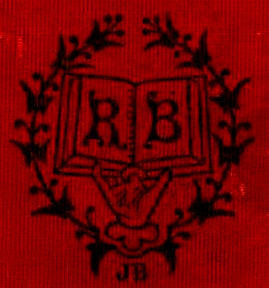
Messrs. Roberts Brothers (1857–1898) were bookbinders and publishers in 19th-century Boston, Massachusetts. Established in 1857 by Austin J. Roberts, John F. Roberts, and Lewis A. Roberts, the firm began publishing around the early 1860s. American authors included: Louisa May Alcott, Susan Coolidge, Emily Dickinson, Maud Howe Elliott, Louise Imogen Guiney, Julia Ward Howe, Helen Hunt Jackson, Abigail May Alcott Nieriker. British and European authors included: Berthold Auerbach, Caroline Bauer, Mathilde Blind, Juliana Horatia Ewing, Anne Gilchrist, David Gray, Philip Gilbert Hamerton, Jean Ingelow, Vernon Lee, William Morris, Silvio Pellico, Adelaide Ristori, A. Mary F. Robinson, George Sand, Charlotte Mary Yonge, Helen Zimmern.

Elizabeth Eggleston Seelye was an American writer and biographer. Her story "The A.O.I.B.R.", which appeared in Harper's Bazaar in 1889 with an illustration of a child reading, is cited by the Rockwell Centre for American Visual Studies as an early illustration of a girl reading. Allegra Eggleston and Rosina Emmet Sherwood provided illustrations for Seelye's stories.
Clara Miller Burd was an American stained glass designer and children's book and magazine cover illustrator.

Gertrude Alice Kay was an American children's literature illustrator and author best known for her work in fairy tales and beginner novels. She was active during America's Golden Age of Illustration.
Harriet Roosevelt Richards was an American illustrator, best known for her work in children's books and magazines.
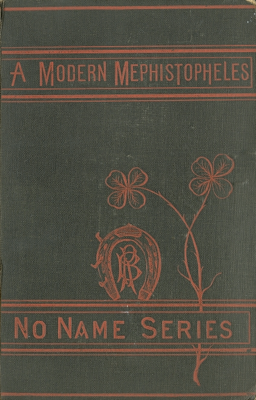
A Modern Mephistopheles is a gothic thriller published by the Roberts Brothers in 1877 and written by Louisa May Alcott. It is based on Goethe's Faust and contains stylistic elements Alcott used earlier in her writing career. The novel follows Felix Canaris and Gladys, two young people whose lives are manipulated by a wealthy semi-invalid Jasper Helwyze, who seeks to undermine their relationship for psychological experimentation. Under Helwyze's direction, Canaris and Gladys marry. Gladys and Canaris eventually overcome Helwyze's influence on them.



















